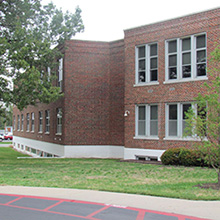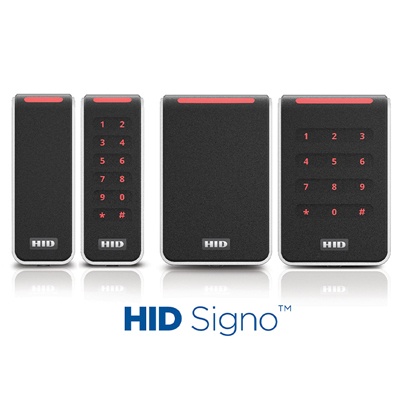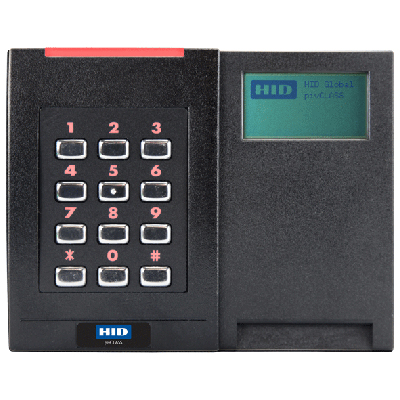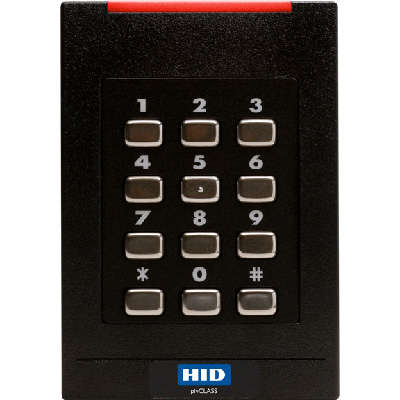 |
| Omnicast is managing almost 500 fixed Panasonic cameras |
Over a hundred years ago, eight independent elementary schools in the city of Raytown, Missouri, a suburb of Kansas City, consolidated to offer the best education for their community. Today, their commitment to academic and social excellence continues to be the foundation of the school district known as Raytown Quality Schools. With enrolment reaching almost 9000 students, Raytown Quality Schools comprises ten elementary, three middle, two senior high, one alternative school, an early childhood centre, a school for multiple handicapped students, and a vocational school.
Business challenge
Raytown Quality Schools have always put their students’ best interest first, so keeping their environment safe and secure is a top priority. Years prior, reports of tire theft prompted Raytown Quality Schools to invest in their first security system. This included over 50 analogue PTZ cameras, installed specifically to tour the parking lots of their facilities and deter theft.
Only weeks after installation, tire thieves caught wind of the heightened security and kept off school grounds. But as years passed, other pressing incidents like break-ins, school property theft and vandalism occurred in and around the district. Since the cameras were not focused on the facilities themselves, administrators and security operators were unable to resolve incidents or pinpoint suspects. Eventually, the antiquated security system purchased years ago was unable to meet the growing needs of the district.
With input from Raytown’s Safety Task Force which included community and school personnel, Raytown Quality Schools’ Technology team were the driving force behind a new district-wide security platform. Raytown School District committed to a three-year funding plan with phased implementation beginning in year two. This plan included both a yearly budget allocation and the application for a COPS Secure Our Schools (SOS) grant which beyond the equipment and installation services afforded some professional user and security training.
According to Melissa Tebbenkamp, Director of Instructional Technology, who was charged by the Safety Task Force to lead the upgrade to a district-wide security platform, “The main reason why we decided to grow the district solution from our 50-plus cameras to 500-plus cameras was to really provide that added layer of security and deterrent. After all, our highest-level objective is student safety.”
Raytown quality schools security needs
Tebbenkamp and Raytown’s Technology team worked with the Safety Task Force in putting together a thorough project plan, carefully evaluating the security needs of the district, both in terms of solutions and coverage.
“We definitely wanted an IP-based solution,” said Tebbenkamp. “We wanted to go away from analogue. We also wanted the hardware and the software to be open standard, that way we were not locked into any specific technology. Finally, we wanted the system to be as scalable as possible while minimising budget impact and any additional hardware investments.”
Tebbenkamp also wanted the benefits of centralized management and storage. Not only would this compliment their existing centralised network used for other applications, but her team would also be able to easily oversee the maintenance and stability of the system directly from the Technology Centre where support and servers are housed.
"That’s the beauty of Genetec’s solutions; we can pick the camera that is best suited for the application at that time" |
Access control functionality was also an important requirement. Raytown’s Technology Center already had Genetec’s access control system, Synergis, managing over 16 HID door readers; and there were plans for more expansion. In fact, as secondary phase of the deployment, Raytown wanted to also electronically secure the main entrances and exits of all schools in the district, making compatibility with the Synergis access control system vital.
With set guidelines in place, the Technology team led the evaluation process. They considered a host of software and hardware solutions, even setting up their own facility as a test site. “We actually installed each software component and connected each camera that we were looking at,” confirmed Tebbenkamp. “We were also looking to see how each software solution would integrate with our expanding access control system.”
After carefully considering various solutions over five months, Raytown’s Technology team made the proposal to the Board of Education for Security Center, Genetec’s unified security platform. Security Center which blends video surveillance, access control and license plate recognition under a single intuitive platform best met their needs.
The right solution
From start to finish, Raytown Quality Schools took about one year to complete the roll-out of the video surveillance deployment. Today, Security Center’s video surveillance system, Omnicast, is managing almost 500 fixed Panasonic cameras (model WV-NW502 for external use and model WV-SF336 for internal use) that are spread out across all fifteen facilities in the district. Cameras have been strategically installed in Raytown’s facilities’ most critical areas, including high-traffic hallways and public gathering areas like cafeterias, administrative offices and main entry ways. About 25 analogue cameras were preserved from the previous system and connected to the network with Axis Communications M7001 encoders, and another 15 Axis IP cameras were also recently installed at the high school’s athletic fields.
“That’s the beauty of Genetec’s solutions; we can pick the camera that is best suited for the application at that time,” said Tebbenkamp. “So we can handle our athletic fields with the Axis cameras, and our internal and external building coverage with the Panasonic cameras, and connect our old analogue cameras to the network with Axis encoders. Just the ease of integrating multiple manufacturers of cameras, multiple models, seamlessly, is one of the reasons we chose Genetec’s Security Center.”
Beyond the network-based and open architecture of Security Center, Raytown’s Technology team also felt the scalability and the task-based user interface were in line with their expectations. Tebbenkamp continued, “We could add servers to our array and have a cluster and not add any additional NVRs. So the scalability of the system was a huge factor. And also the ease of use; we knew the system was pretty intuitive, and so we wouldn’t have to spend as much time in training our end-users.” More so, avoiding the need for additional training and hardware has reduced the system’s total cost of ownership, allowing Raytown Quality Schools to fully maximize their budget. The open architecture of Security Center has also played a role in helping the school district financially manage the growth of their system, as cameras or new technology can be added in increments as funding becomes available.
 |
| Raytown’s Technology Center already had Genetec’s Synergis managing over 16 HID door readers |
All video is recorded in H.264 compression, and pulled back to the Technology Center for long-term archiving through a leased WAN; and wirelessly from the Axis cameras on the athletic fields. Approximately 70 TB of storage is allocated for all cameras in the district, accommodating a set retention period of approximately 10 days.
The flexibility and ease of centrally managing the district-wide system has been pivotal to Raytown’s unified platform installation. The Technology team is fully responsible for maintenance and the stability of the platform, and provide support for retrieving archived video. However, day-to-day video viewing and incident investigation is done by principals and building administration at each school.
“We have set user access privileges in Security Center, so different users are restricted to only the tools and information they need to see. We are there to support them, anytime they need to permanently retrieve video, burn to a CD, and provide it to the police; we do all of that. They can view and bookmark something in archive and we take it from there,” said Tebbenkamp.
This has been further facilitated by Security Center’s Active Directory Integration feature that helps Raytown’s Technology team save time and eliminate errors by synchronising Windows user accounts with Security Center’s user and cardholder accounts, including their building access rights and system privileges. Tebbenkamp also added that Security Center’s Active Directory Integration is a feature “we love and simply cannot live without.”
Although the Technology team is still exploring the extent of features available in Security Center, a few characteristics and functionalities have stood out already. According to Jeff Schnebelen, Network Specialist, “I’d have to say that from working with other security systems in the past, I like the fact that everything can be handled from a normal PC-based desktop computer. There is no need for any peripheral devices or proprietary components to view video, retrieve video, and pan or zoom the camera. The system is also compliant with the Windows 7 operating system.”
“Our principals love the motion search function,” said Darren Nixon, Assistant Director of Operations. During an investigation, the operator would pull up a specific camera, draw a box around an area and request the system to pull up all motion-related events during a specified time. By double clicking an event, video is displayed. “Coming from the old analog system, it’s like night and day. The motion search function saves our principals tons of time,” continued Nixon.
"We have set user access privileges in Security Center, so different users are restricted to only the tools and information they need to see" |
The benefits
When it comes to boosting efficiency and protecting their students, Raytown Quality Schools has experienced tremendous advantages with the new Security Center platform, both from a maintenance and operational perspective. The Technology team have set up email notifications in Security Center to alert them when a camera goes offline, and regularly pull health status reports to monitor door activity at their Technology Center. Operationally, Tebbenkamp has more positive testimony: “We have really empowered our principals, secretaries and security officers since installing Security Center. They use the cameras and video system to resolve incidents themselves, whereas if they had to call us to view video, they would probably not investigate further to confirm actual events.”
One of the first events that was resolved with Security Center was a principal who thought his student left the school grounds to purchase fast food. After pulling the video, they validated that the student’s brother actually brought the food and the student just ran outside to grab it. According to Tebbenkamp, “That conversation looked a lot different for that student since we didn’t accuse them of doing something that they didn’t do.”
A more serious circumstance was a runaway case where the school was able to use Security Center to track the student from their last period of class through the halls out to the parking lot, witnessing every car she visited and every person she spoke with, up until she got into a car to leave the premises. “That allowed us to have additional points of contact to help police in their investigation,” continued Tebbenkamp.
Raytown Quality Schools has also set up remote access for the local Raytown police departments and fire marshals. In case of emergency circumstances, they can access live video to have better situational awareness. And Raytown’s Technology team has more plans in store for their district-wide system. Phase two of their unified platform installation is to secure a total of about 60 doors within the various facilities.
“One of the main selling points of Genetec’s Security Center was Synergis, and that we would be able to have unified access control functionality under the same platform. We’ve just received funding so we’re going to expand our Synergis system across the district, adding between three to six doors per building.” Once again, Raytown Quality Schools will be leveraging their existing network to install and manage the end-to-end IP-based access control system, benefiting from less wiring, more efficient deployment, and their related savings.
The schools are also |
Raytown Quality Schools is also considering unifying their alarm systems and other building management systems within the security platform, as well as looking at efficiency-boosting system plug-ins like Security Center’s Mobile App. “All of our administrators either have an iPad or Android tablet, so we’ll make sure they have access on their tablet. Whenever a situation comes up that needs investigation and the user is not at a workstation with Genetec software running, they will nonetheless be able to access their security platform from anywhere and make informed decisions,” said Tebbenkamp.
Beyond security applications, discussions with principals on how to leverage Security Center for other school-related applications are ongoing. According to Nixon, “Just this morning I had a conversation with the principal. They had just done a drill for lockdown and I asked ‘Would your security system and the video give you a big hand in that?’ He was definitely interested.” Replaying video after an emergency drill could help administrators identity vulnerabilities they may have overlooked and bring improvements to their procedures.
Although Raytown Quality Schools are still exploring all the value-added benefits of the unified platform, a yearly survey was sent out to students on how they feel about their schools revealed Security Center’s true impact: “There is a significant improvement in the number of students that reported feeling safe and secure in their schools, and that the district’s concerned about their safety. This has really helped play a role in our culture that says ‘we are safe’,” proudly concluded Tebbenkamp.






































